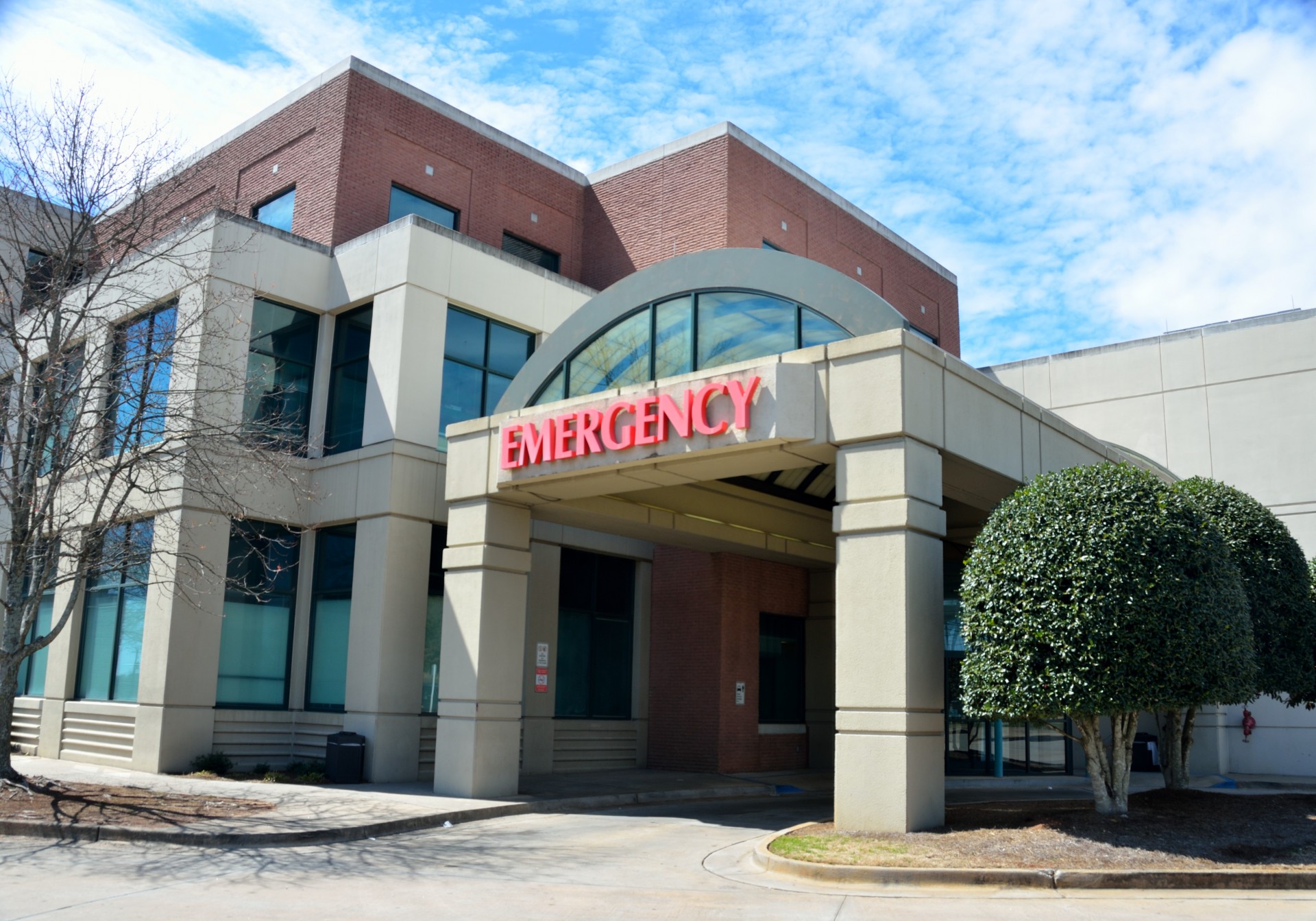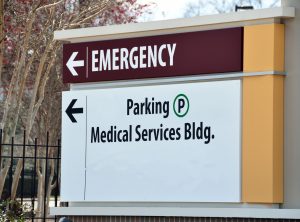Alarm Trends in the Healthcare Market

By: Jon Polly | Feb 01, 2021
The healthcare market is a long sought-after vertical for many security integrators. While many facilities are dominated by the national chains, many regional and local security integrators are finding niches that are opening doors into this market. Healthcare brings a constant amount of new business, equipment lifecycle upgrades, and yearly support agreements. It can also bring siloed information, disparate stakeholders, and massive amounts of red tape.
Security technology solutions for healthcare include enterprise level Electronic Access Control (EAC), camera systems [both Video Management Systems (VMS) and standalone recorders], Physical Security Information Management (PSIM) applications, Fire Alarm with Voice Evacuation / Mass Notification, Med-Gas Alarms, Infant Protection Alarms, and more.
The central hospital is the hub of all healthcare. This is a 24/7/365 group of facilities where even the smallest facility has the feel of a mall on a Saturday during the holidays (even a COVID-19 Christmas). Spend an hour in a hospital and hear the constant ring, ding, chirp, and squeal of alerts from machines. Equipment alarming is a way of life in the healthcare facility. But those alarms have nurses to handle the response. It’s the other alarms that security personnel handle in the background to keep patients safe.
Typically, tucked in the bowels of the hospital or in a remote but attached building will be the offices of hospital security. The team will consist of security officers or sworn police officers with arrest capabilities. They man a Security Operations Center (SOC) where the hospital systems can be visualized. For many hospitals, there are unmonitored security alarm panels since the onsite team can respond immediately, and any delay created in the response could be detrimental. To respond, the officers must first see or hear the alarm. This happens at most hospitals through an integrated approach. Some integration is very tight, while others are barely integrated at all.
The Unified Platform – Very costly with many benefits. This is where most hospitals are heading, but most are not there yet.
- Many healthcare groups are moving to a fully unified platform; a platform where access control, alarms, video, and even responses are handled within the same platform. Unified platforms allow alarm events to be logged across both access control and video and can allow for a more complete digital evidence management of the occurred event. The ability to add officer’s body worn video, written reports, and scene pictures make the unified platform a complete digital evidence locker as well.
The Integrated Platform – Less costly, but this can get costly quickly. Less benefits, but more than before.
- Most hospital facilities have a stand-alone enterprise level access control; such as SoftwareHouse, Lenel, AMAG, or Genetec– but many other systems are also used. Many hospitals originally decided on Casi-Rusco or Mercury systems, which has allowed for the panels to remain, and new software systems to be overlaid. Video for healthcare facilities may be a traditional Video Management System (VMS), such as Genetec, Milestone, Avigilon, or others; or it may be a network of disparate DVR / NVRs. Hospitals are finding the value of camera analytics and these can be found on the camera, the DVR / NVR, or at the central server / storage of video. Cameras offer alarm functionality either on the camera or via the VMS / DVR / NVR application.
- Integration here for alarms involves running extra wire and landing traditional alarm devices (door position sensors, PIR motion detectors, perimeter security, etc.) on the EAC system and program for an alarm trip. Functionally this is the same as an alarm panel with officers able to respond immediately. Typical areas of coverage will include pharmacies / nuclear material and perimeter security.
The Physical Security Information Management (PSIM) System – Very niche, offers great value but considered excess.
- Ever been in a Security Operation Center (SOC) where alarms are going off everywhere? Which one gets answered first? Where are they coming from? Is that labeled correct? Many healthcare security departments are resorting to the PSIM as the “Single Pane of Glass” to offer intelligent viewing of systems to the operator. PSIMs gather disparate data and allow the operator to quickly interact with the data from the SOC or as they are responding to incidents via mobile device.
The Other Alarms
Hospitals have a number of other traditionally stand-alone alarm systems.
- Fire Alarm – Required by fire code. Most of these will have audible voice evacuation and may include mass notification systems as well since the systems are in buildings with over 1000 persons occupying the facility at any given time. There is some integration between fire alarm and the unified systems, but the ability to integrate still falls to the Authority Having Jurisdiction (AHJ) on if they will allow the integration.
- Medical Gas Alarms – Required by NFPA 99 to have Master Alarms in at least two locations. The AHJ has full authority on the system. Most systems have one of the Master Alarm annunciator panels in the SOC, but these are not integrated with the EAC system.
- Infant / Pediatric / Wandering Patient Alarm System – Alarm system with a tag to make sure the infant / child / wandering patient does not leave the confines of the hospital. Some of these systems can be integrated with EAC and / or VMS solutions. Integration can provide camera call-ups, initiate lockdowns, and perform additional actions to prevent the loss of the patient.
- Panic Alarms – Hospitals equip many of the nurse stations with panic buttons. In the digital age of Bring Your Own Device (BYOD) and as IT Departments have mandated applications, many hospitals are incorporating either a physical panic alarm at a nurse’s station or welcome station, or have moved to a software panic button solution where the activation of an app or a couple of keystrokes can initiate the panic alarm. Testing of the panic button is imperative and can offer additional preventative maintenance recurring revenue to the integrator. Panic buttons must work when pressed.
Independent Security Systems
 Security at the remote site is reminiscent of traditional commercial buildings with a small number of IP cameras recording locally with possible remote viewing capability. The building may or may not have an access control system. The access control system may be a local system with battery powered locks or it may be secured with the enterprise class access control the central hospital buildings use. Unlike the central hospital, these remote sites rarely have security onsite after hours, preventing a timely response. The alarm systems here are traditional alarm panels with connectivity back to a UL Listed (preferred) Central Station. While the hospital security may be the first key-holder call, local law enforcement will have less of a delay in most cases. DMP and Honeywell are the leading panel providers in this market today. The remote site may have Medical-Gas alarms and panic buttons. Most will have a fire alarm where required either by Code or by insurance provider. The fire alarm panel here will not need voice evacuation.
Security at the remote site is reminiscent of traditional commercial buildings with a small number of IP cameras recording locally with possible remote viewing capability. The building may or may not have an access control system. The access control system may be a local system with battery powered locks or it may be secured with the enterprise class access control the central hospital buildings use. Unlike the central hospital, these remote sites rarely have security onsite after hours, preventing a timely response. The alarm systems here are traditional alarm panels with connectivity back to a UL Listed (preferred) Central Station. While the hospital security may be the first key-holder call, local law enforcement will have less of a delay in most cases. DMP and Honeywell are the leading panel providers in this market today. The remote site may have Medical-Gas alarms and panic buttons. Most will have a fire alarm where required either by Code or by insurance provider. The fire alarm panel here will not need voice evacuation.
In Closing
Today there are over 6,100 hospitals in the United States alone. ASIS International, the world’s largest membership organization for security management professionals, lists approximately 900 members associated with healthcare physical security. The International Association of Healthcare Security and Safety (IAHSS) lists approximately 2,200 members worldwide associated with healthcare physical security. Many individuals are members of both associations. Those numbers provide a substantial gap in healthcare security where many hospitals may have only a basic coverage with outdated technologies. The security industry can offer both education to hospital security teams as well as product, installation, and professional services. While there are many suitors to offer these systems, there are many niches to open other doors. Sellers beware, the fierce competition will force even a seasoned integrator to step up their offer, but the rewards can be a catalyst for explosive growth.

